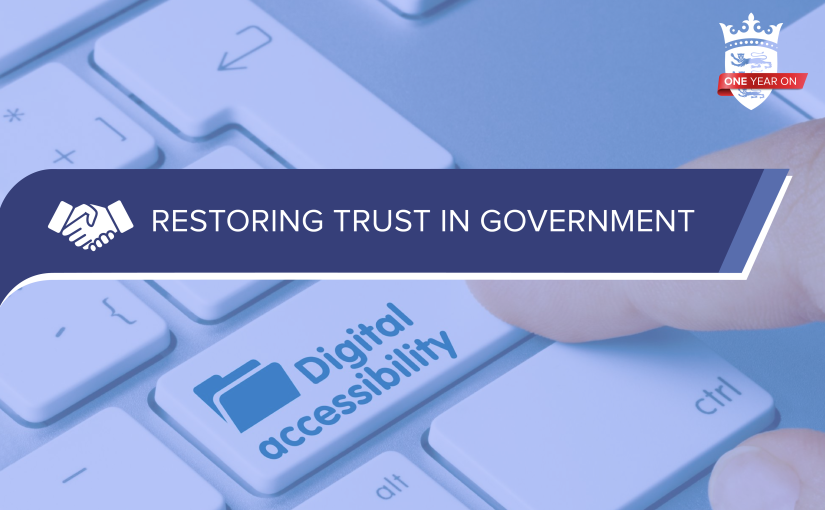In an increasingly digital world, ensuring that government information and services are accessible to all citizens, regardless of their abilities, is paramount. Recognising this, the Government of Jersey has taken steps to make gov.je as accessible as possible.
Understanding Web Accessibility: A Brief Overview
Web accessibility refers to the inclusive practice of designing and developing websites that can be used effectively by people of all abilities, including those with disabilities. This involves creating an online environment that accommodates various disabilities such as visual, auditory, cognitive, and motor impairments. The aim is to ensure that information and services are equally available to everyone, promoting inclusivity and equal participation.
Our commitment to accessibility on gov.je
We are committed to providing a website that is accessible to the widest possible audience, regardless of ability, capability or technology.
We routinely check the pages on gov.je to ensure that they meet our accessibility requirements. We welcome your feedback regarding the accessibility of any of our pages or services. We aim to conform to the World Wide Web Consortium’s (W3C’s) Web Content Accessibility Guidelines (WCAG) 2.1.
Accessibility Features
1. Clear Design and Layout
The website’s design is clean and organised, making it easier for users to navigate and find the information they need. Clear headings, logical page structures, and consistent formatting contribute to a more accessible experience.
2. Text Alternatives
Images and multimedia content are used only where they add contextual value. Where images and multimedia content is used on the website we aim to use descriptive alt text, ensuring that users with visual impairments can understand the content even if they cannot view the images. Video content is accompanied by transcripts.
3. Keyboard Navigation
The site is designed to be navigable using keyboard-only inputs, which is crucial for individuals who have motor disabilities and rely on keyboard navigation rather than a mouse.
4. Colour Contrast
The website’s colour scheme maintains a sufficient level of contrast between text and background, enhancing readability for users with low vision or colour blindness.
5. Accessible Forms
Forms on the website are designed with accessibility in mind, making it easier for all users to fill them out, including those who use screen readers.
6. Assistive Technology Compatibility
The website is built to be compatible with various assistive technologies, such as screen readers and voice recognition software, ensuring that users who rely on these tools can navigate the site effectively.
Ongoing Efforts and Future Goals
The Government of Jersey understands that digital accessibility is a continuous journey. While the gov.je website has already made significant strides, we acknowledge that there’s always room for improvement. We are committed to regularly reviewing and updating their practices to ensure that the website remains as accessible as possible.
User Engagement and Feedback
A noteworthy aspect of the gov.je accessibility initiative is its openness to user feedback. Users are able to report any accessibility issues they encounter.
In an age where digital platforms have become primary channels for accessing essential information and services, it’s critical that gov.je is accessible to everyone. By embracing inclusive design practices, incorporating accessibility features, and valuing user feedback, the Government of Jersey is setting out its standards. Through a commitment to ongoing improvement, we are working towards a future where digital services leave no one behind.
 blog.gov.je
blog.gov.je